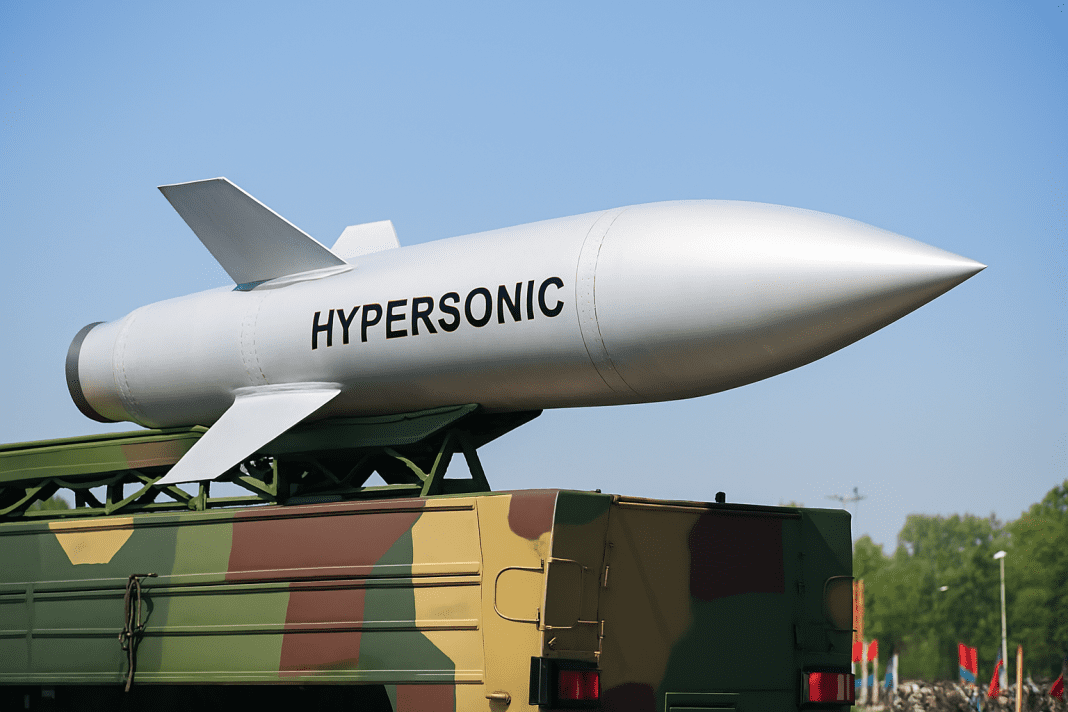On September 3, during a large military parade in Beijing, a few trucks rolled through Tiananmen Square carrying camouflaged loads marked “CJ-1000.” These were not ordinary missiles. They were hypersonic cruise missiles, also called Long Sword-1000s, designed for ultra-long-range strikes.
CJ-1000 and the Rise of a Hypersonic Threat
Unlike most hypersonic weapons in development around the world that target ships or land bases, the CJ-1000 is reported to have a unique role. It is designed to attack aircraft in the sky. That makes it potentially the first hypersonic surface-to-air missile that could change how modern air battles are fought.
According to Chinese state media, the CJ-1000 can strike “system-node targets on the ground, at sea or in the air.” In simpler terms, it means the missile is built to destroy key parts of an enemy’s operations. These include critical aircraft that control or support entire missions. If confirmed, this would mark a big shift in how the People’s Liberation Army (PLA) plans its air defense strategy.
Qatar may host Iran’s hypersonic Fattah protection as lawmaker urges IRGC shield against Israel
Capabilities of the CJ-1000
While official details remain undisclosed, reports suggest the CJ-1000 may be able to travel at speeds above Mach 5. That is over five times the speed of sound. At such speeds, large aircraft have almost no time to escape. Maneuvers that normally help planes avoid traditional missiles would be nearly useless.
Experts believe the missile is designed to target high-value airborne assets. These include aerial refueling tankers, which supply fighter jets with fuel mid-air, airborne early warning (AEW) planes that detect enemy aircraft from long distances, and reconnaissance planes that gather intelligence. Even aircraft critical to national leadership, such as presidential planes, could theoretically be at risk.
Reports indicate that the CJ-1000 might have a range of more than 6,000 kilometers. This means it could be launched from deep within China or even from naval bases in the South China Sea and still reach aircraft flying thousands of miles away, including those operating from Guam, Hawaii, or mainland US.
The missile’s design is thought to include a scramjet engine, which allows it to “breathe” air while flying at hypersonic speeds. Unlike ballistic missiles that travel in predictable arcs, hypersonic cruise missiles can fly lower, stay maneuverable, and avoid being easily tracked by radar or satellite warning systems.
Arctic chaos as sanctioned Russian tanker Lynx freezes in ice while shadow oil sails to China
What PLA War Games Suggest
A recent study from China’s National Defense University sheds light on how such a weapon could be used. Researchers used computer-based war games to simulate how the PLA might deploy ultra-long-range surface-to-air missiles like the CJ-1000.
The study outlined a three-tier strategy. The first layer includes point-defense systems. These are designed to shoot down drones or close-range threats on the battlefield. The second layer consists of mid-to-long-range missiles, which operate based on preset rules and focus on stealth aircraft or ballistic missiles.
The third and most powerful layer includes ultra-long-range systems such as the CJ-1000. Unlike the first two layers, these weapons are not controlled at the local level. Instead, they fall under the authority of campaign-level commanders or higher. Because of their long reach and strategic impact, their use requires direct approval from top leadership.
In simulations, the hypersonic system stayed inactive until manually authorized, showing strict control over its deployment. Once activated, the system was tasked with striking large, high-value targets. These included aircraft that play a supporting role in modern air warfare.
Such “force multipliers” are essential to today’s military operations. They do not fight directly but provide early warning, data sharing, electronic warfare support, and aerial refuelling. Destroying them can disrupt an entire air campaign without even engaging enemy fighter jets.
The war game findings suggest that the CJ-1000 is built exactly for this purpose: to reach deep into enemy-controlled airspace, identify high-value targets, and eliminate them before they can provide support.
A Strategic Shift in Air Warfare
For decades, US and allied forces have relied on the belief that support aircraft could remain safe by staying far behind the front lines. Conventional surface-to-air missiles did not have the range to reach them. The CJ-1000, however, indicates that this sanctuary may no longer be secure.
U.S. expands hypersonic weapons programs as China and Russia deploy advanced missile systems
At hypersonic speed, with the ability to fly low and maneuver, the missile reduces reaction time for opponents to almost zero. Combined with long-range deployment, it gives the PLA the capacity to threaten aircraft that once operated in relative safety.
Military assessments show that this weapon is not just another missile. It represents a shift in how wars in the air may be fought. By threatening the support systems of an enemy air force, the CJ-1000 could weaken its ability to function before a direct battle even begins.

